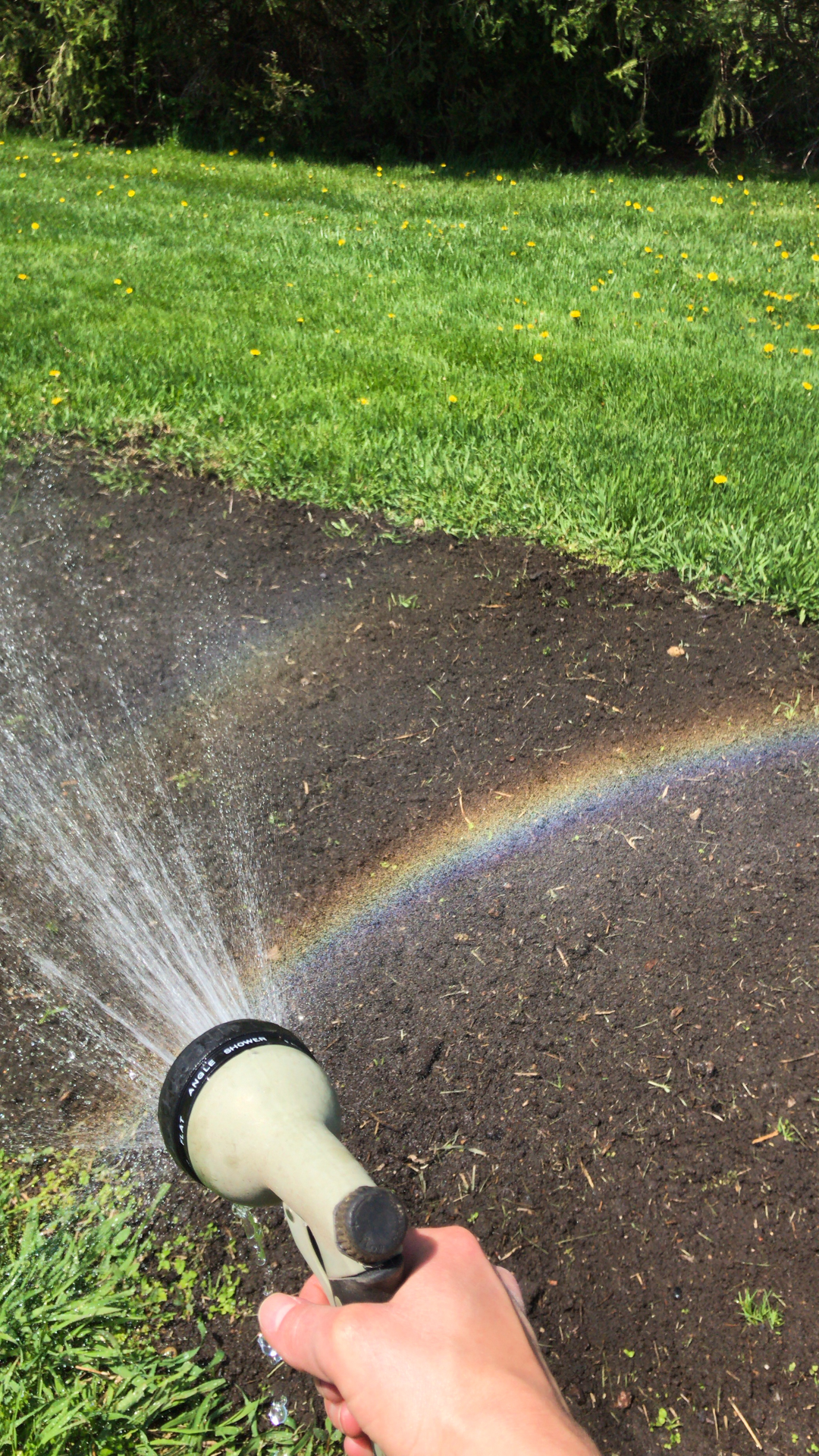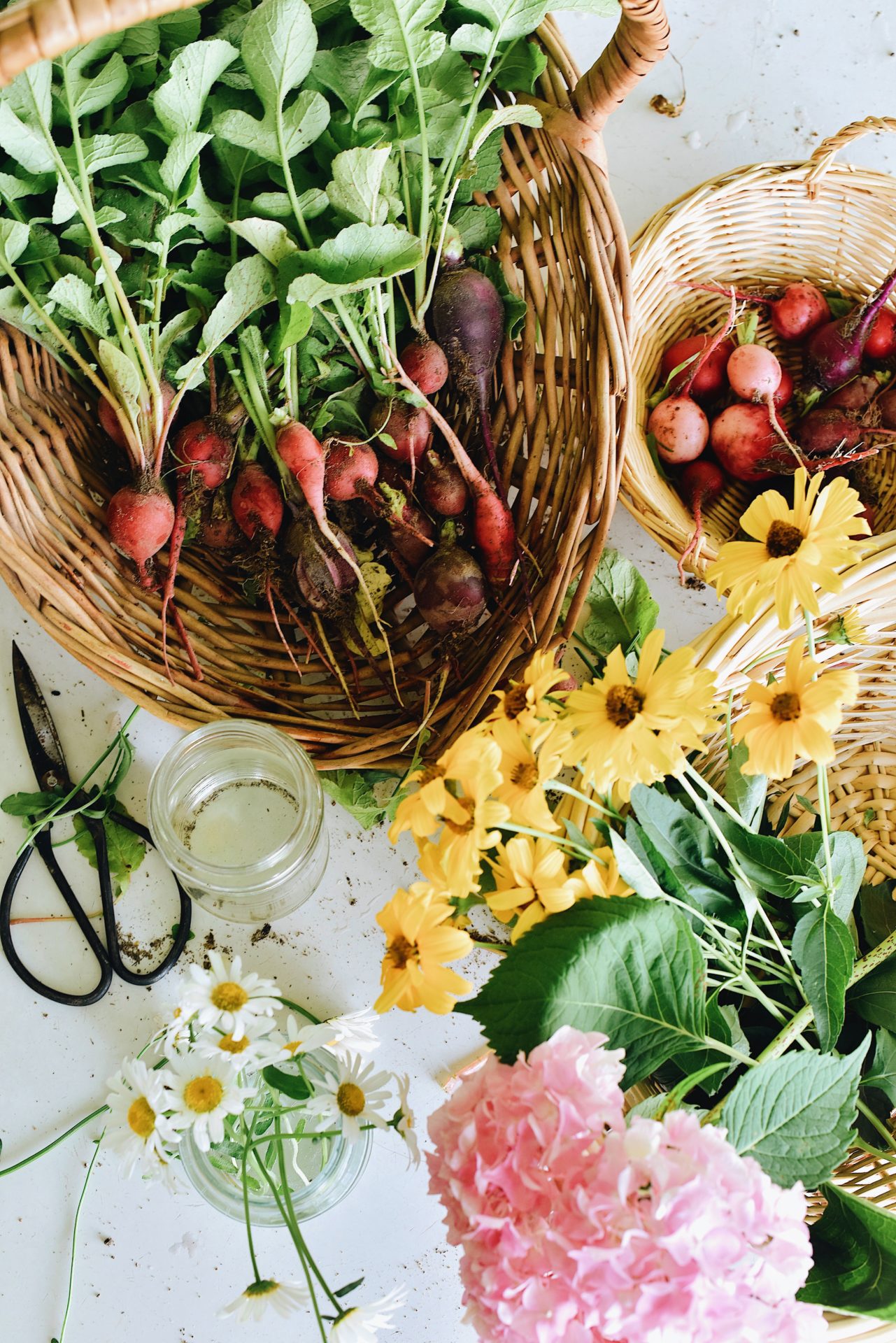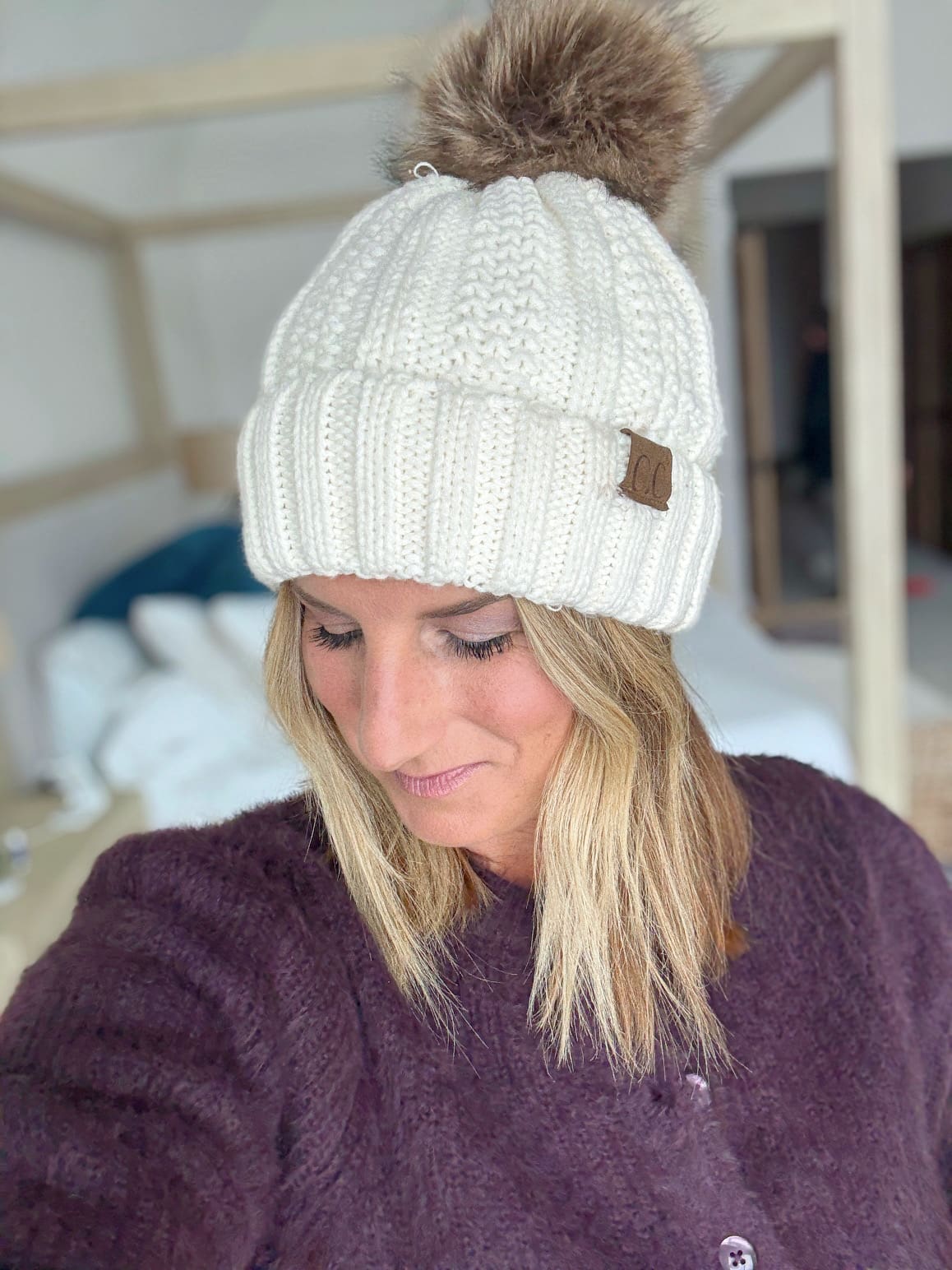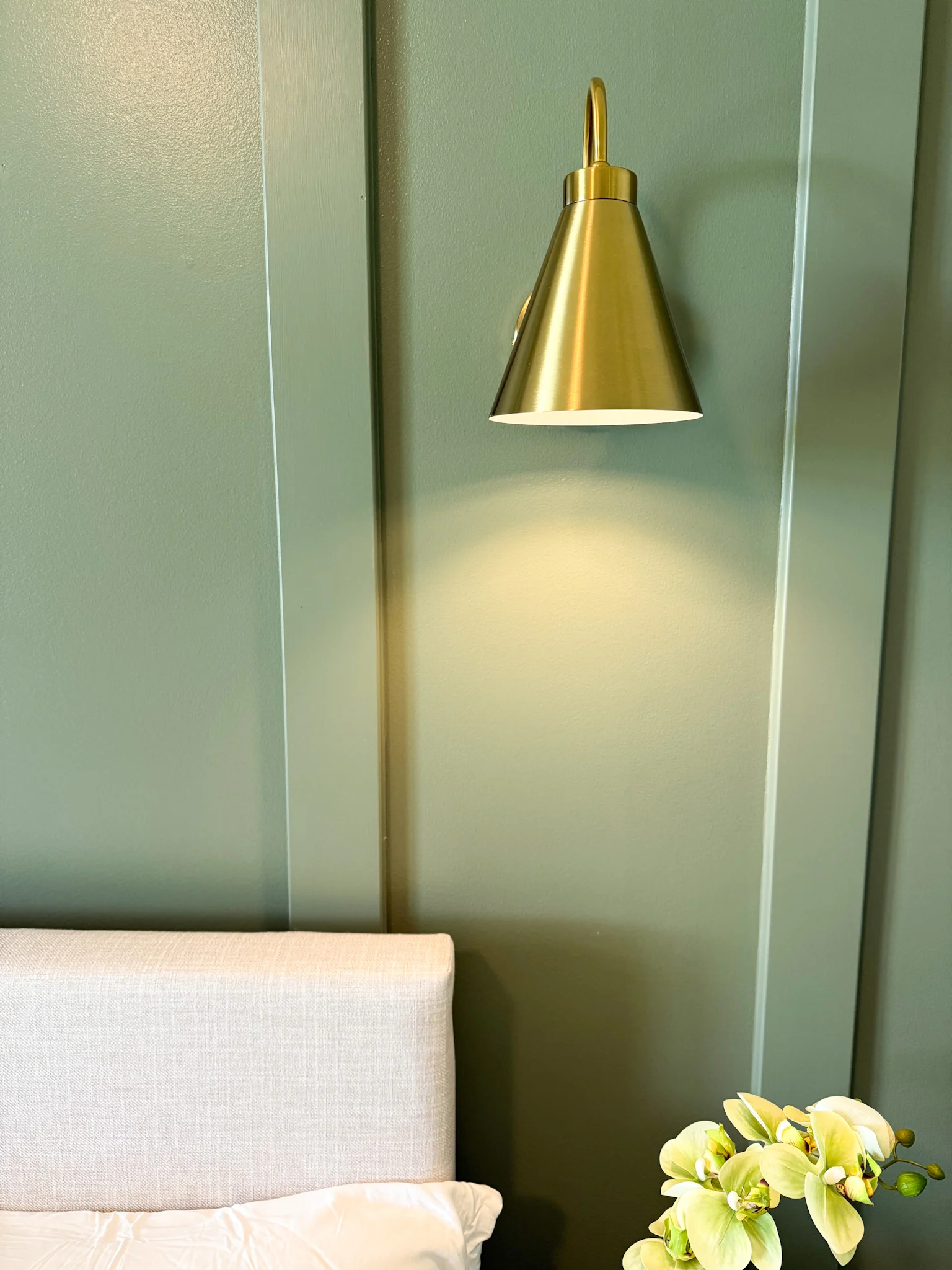
What’s my favorite thing about Spring? [Besides the snow melting, sun shining and a house filled with fresh breezes through open windows of course…] Getting my hands dirty in fresh garden soil! While I certainly don’t consider myself a professional by any means – I teamed up with Macy to bring you a few tips and tricks we’ve picked up along the way from one of our favorite hobbies!

When do you start your garden?
Before you begin physically working on your garden, it’s important to do some research! Companion planting (more on this later) is extremely important if you plan to grow more than one item. It’s also important to plan out your space to allow enough room for each of the things you plan to grow. You can learn more about the space required for your crops on Farmer’s Almanac. You’ll see lots of links here to that site. That’s because we reference it often personally – and we’d better leave some things up to the experts!
For our area in Northern Indiana, we typically begin planting shortly after Mother’s Day weekend. You can decide when it’s best to plant by looking at the last frost date for your area, and the instructions for what you plan to grow.
What do you do to prep the soil?
If you don’t currently have a garden – you’ll need to remove any grass or weeds currently occupying the space. You can do this a few different ways – the two I’ve tried are manually by shovel, or by renting a sod remover from a local rental store. If you’re working with a small space, you can probably get by with a shovel (make sure it’s sturdy and has a sharp, pointed blade), but the sod remover was definitely easier on the back!
Before you start digging – make sure you’re selecting a space with plenty of sun! For most garden plants, that means 6+ hours of direct sunlight per day!
Once you’ve got your space cleared, you’ll likely need to fertilize the soil. I typically do this by purchasing compost manure from a local feed shop. Another option is to apply duck manure in the Fall after you clean out your garden, however this of course takes some pre-planning during the Fall.
If you’re working in the Springtime – compost manure is probably the way to go. Purchase several bags (or get it from a farmer #midwestliving) and disburse it over the top of your garden. Simply pour directly from the bags within the area of your garden. No need to disperse it by hand – the tiller will take care of working it into the soil!
The last step in preparing your soil is to till, till, till! Whether you’re applying manure or not, you’ll want your soil to be nice and loose before planting. This is especially important if you are working with a recently cleared area of the yard, or if your space has naturally dense soil. If you want the roots to grow deep and healthy (hint- you do!), you’ll need to loosen up the soil to give them room to spread out. The blade length on your tiller will mostly dictate how deep you are able to go into the earth, so keep this in mind when purchasing.
Tips for Tilling
- Make sure the soil is fairly dry when you till! If you till when the soil is too wet, it will dry into a solid mass. You can test if your soil is at a good moisture level by picking up a handful and squeezing it in the palm of your hand. If it falls apart when you release, you’re good to go. If it stays in a ball in your hand, better wait a bit!
- Clear your garden of any visible rocks before you till. If the tiller hits a large rock, it is possible it will toss it pretty far which could be damaging to yourself, your children, your pets, or your windows.
- Wear close toed shoes just in case – you are working with a powerful rotating blade! While there are safety features on the tillers, better safe than sorry!
- I always make sure to wear sunglasses to keep any created dust out of my eyes. I’m sure the “right” answer here is to tell you to wear safety glasses… but it’s sunglasses for me!
- If you are using an electric tiller, make sure to keep the cord out of the tiller’s path.

What is Companion Planting?
Companion planting is basically planting things next to each other that get along well. Sometimes plants are companions because they work well together for insect control, use of shade, cross pollination, and sometimes it seems like they just like to grow near one another. As a general rule, check out Farmer’s Almanac’s guide to Companion Planting for whatever you’re going to plant. We’re dropping a few of our favorite items to grow here for reference:
Green beans
- Good Companions: Lavender, Cabbage, Cucumber, Strawberries
- Bad Companions: Onion, Garlic
Onions
- Good Companions: Carrots, Beetroot, Strawberries, Tomatoes, Lettuce, Cabbage
- Bad Companions: Peas, Beans
Tomatoes
- Good Companions: Basil, Oregano, Chives, Onions, Carrots
- Bad Companions: Potatoes, Cabbage family
Peas
- Good Companions: Lavender, Carrot, Radish, Cucumber, Beans
- Bad Companions: Onion, Garlic
What is SO easy to grow?
In our experience, the easiest things we’ve grown are:
- Green Beans – These grow easily from seed and offer near-immediate gratification as the tend to sprout quickly.
- Onions – Grow from bulbs, I purchase mine at a local greenhouse.
- Cucumbers – I grow these from plants that I purchase from a local greenhouse. Cucumbers spread, but you can use a tomato cage if space is a concern!
- Tomatoes – I grow these from plants that I purchase from a local greenhouse. Tomatoes grow easily, but do require a little additional care as you trim back the leaves at the beginning to allow the plant to grow strong. Do a little reading on tomatoes first, and be sure to set up cages as you plant.
- Radishes – These can be planted early if you’re looking to get started before your frost date!
- Snow Peas – Another early planter to get you started.
Also easy to grow from our experience are these herbs, starting all from seed:
- Basil – Grow alone, or sprinkle around the base of your tomatoes to enrich the flavor of both and help prevent blight!
- Chives
- Mint
- Oregano
Be sure to check out this guide to Companion Planting – you may find a few easy things to grow together to get started!
What kind of time commitment is a garden?
That really depends on how big of a garden you’re aiming for! Once you’ve prepped your soil and planted, the ongoing commitment depends a bit on what you’re growing. For the most successful garden possible, you’ll need to make sure it receives enough water (typically about 1 inch per week total – use a rain gauge to keep track) and keep it as weed free as possible to allow your plants to thrive. There are a variety of methods for dealing with weeds – in our experience, surrounding the plants with straw can help some, but good old fashioned pulling is the most guaranteed way.
Once your garden begins producing fruits, veggies and herbs you’ll want to pick them regularly to encourage your plants to keep producing. That part seems less like work and more like a reward though! [I got this basket as a gift after gardening season last year and I can’t wait to use it!]

How do I keep animals and destructive bugs away while attracting pollinators?
There can definitely be a competition between you and other creatures outside wanting to eat the fruits of your labor! Thankfully we haven’t had a TON of trouble with this personally, but some things we’ve used to keep the critters and bugs away are:
- Plant marigolds around the perimeter of your garden. The smell deters many animals like deer and rabbits, and they’ll brighten up the space with color while you wait for your plants to grow!
- Also consider planting pollinating attracting flowers like zinnias and cosmos. You can read more about growing a pollinator friendly garden here! Bonus – zinnias and cosmos will continue to produce once cut so you can have fresh blooms in your home for most of the Summer!
- Macy has had success with hanging metal pie tins to keep rabbits away!
- In the past when there has been a huge rush on destructive bugs, I’ve had luck with this organic insecticidal soap. I do try to limit my use of it because I want to welcome as many pollinators as possible, but there have been times where the bugs that are present have done more harm than good. This is a food-safe way to get rid of destructive pests.

Other Tips & Tricks
- If you’re just getting started with gardening and want an easy way to test it out – start with a very small area or grow things in pots. This will give you a smaller area to weed and water but allow you to experience growing your own food. Read more about easy porch plants here!
- Consider using a raised garden bed if you’re looking to start small. Just make sure your border isn’t made from treated wood to keep your soil as chemical free as possible. Raised garden beds allow for more efficient planting and typically less weeds when utilizing raised garden bed soil. Just make sure to put a weed barrier down before filling with soil!
- Plant a cooking herb garden in a pot, planter box or hanging planter and keep it near your kitchen for easy access. I like to include basil, oregano, thyme and parsley in the same pot.
- If you’re buying plants rather than seeds – buy early! If it is not consistently 60 degrees outside yet, keep them on a wagon and pull it out when temperature allow, and pull it back into the garage or shed to protect from the cold as needed.
- Consider planting rows far enough apart to run the tiller through as an easy way to maintain the weeds.


